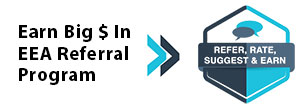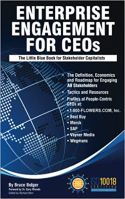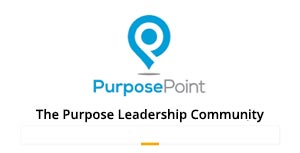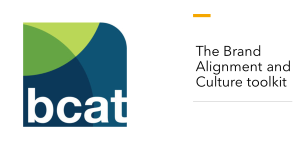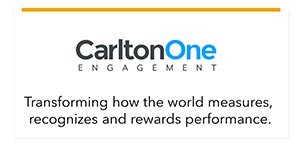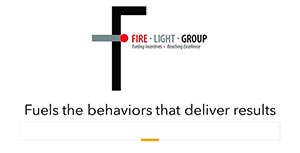Why Engagement Isnít Working and How to Fix it
By Bruce Bolger
Click here to subscribe to the ESM weekly e-newsletter.
Ad Hoc, Siloed, Poorly Measured Processes Plague People Management
The Path Forward: A System to Align the Interests of Relevant Stakeholders
EEA Resources
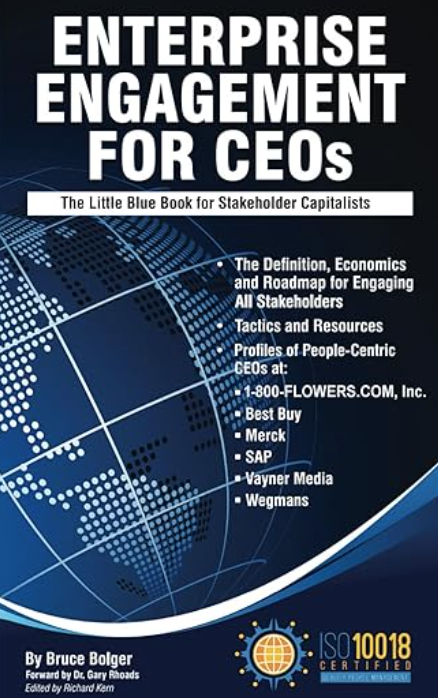 Something clearly is not working when it comes to engaging employees, customers, distribution and supply chain partners. Despite hundreds of billions spent annually on engagement strategies and tactics, and countless recommendations on Linkedin, employee, customer, and distribution partner engagement or loyalty, remain at record lows. Many organizations say they measure the impact of their incentives, rewards, recognition and other engagement efforts. Often these involve measures of activities and participation rather than actual financial or other tangible impacts.
Something clearly is not working when it comes to engaging employees, customers, distribution and supply chain partners. Despite hundreds of billions spent annually on engagement strategies and tactics, and countless recommendations on Linkedin, employee, customer, and distribution partner engagement or loyalty, remain at record lows. Many organizations say they measure the impact of their incentives, rewards, recognition and other engagement efforts. Often these involve measures of activities and participation rather than actual financial or other tangible impacts.This article provides an overview of the principles, implementation steps, and measurement processes underlying the curriculum and certification program of the Enterprise Engagement Alliance. Beyond the extensive free information provided by the EEA, it offers a comprehensive program for management in human resources, sales, marketing, operations, finance and other disciplines seeking the most effective ways to engage their organizations and/or individual teams in their specific purpose, goals, objectives, and values. Click here for details.
Based on the research findings of the Forum for People Performance Management at Medill School of Integrated Marketing Communications at Northwestern University, led by Bruce Bolger, EEA Founder, for most of its nine years in the 2000s, and other research, the EEA formed a community of academics and human capital experts, including Gary Rhoads, Emeritus Professor of Marketing and Entrepreneurship at Brigham Young University’s Marriott School of Business, and Allan Schweyer, Principle Researcher on Human Capital at the Conference Board. It includes contributions from dozens of practitioners in all areas of engagement.
Since the EEA’s education was launched in 2010, extensive research has validated the early Forum for People Performance Management research finding a link between having highly engaged employees, customers, and financial results.
The principles are easy to explain and the processes easy to test, as they are employed every day in thousands of factories around the world. Like total quality management or other business processes, no person or company can own the roadmap. The key is in execution: the ability to measurably harmonize the interests of all stakeholders involved with an organization or a team toward a common purpose, goals, objectives, and purpose, and to integrate all the tactics used to equip and engage them.
Ad Hoc, Siloed, Poorly Measured Processes Plague People Management
The following can be said of most organizations with more than a few dozen people: a lack of a common purpose, goals, objectives, and values creates silos that have people and departments working at cross-purposes or worse. The state of affairs has become so baked into general mentalities that few people, including investors, question the strikingly low levels of customer and employee engagement around the world.
These same conditions plagued manufacturing in the 1900s and still do in many companies that still do not faithfully practice the principles of total quality management: a holistic approach that involves all stakeholders—customers, employees, supply chain partners, etc.--in a continuous improvement process with a clear purpose, goals, objectives and values. It took decades and only intense competition from the Japanese starting in the 1970s to force change in the US.
The Japanese employed the teachings of total quality management guru W. Edwards Deming, who went to Japan only because his work was generally rejected in the US. It took a decade or more for his teachings and those of related consultants to take hold, during which time all sorts of ad hoc approaches were tested. It was not until organizations learned that it takes a strategic and holistic approach that factories began to see measurable results. Today, the US continues to overlook the people elements considered essential in Japan, which may explain why only one US car is on the top 10 list of best cars in Consumer Reports.
One reason that total quality management practices finally flourished into an enormous industry is that the results can be clear measured in defects, productivity, customer satisfaction, safety, etc. In the world of human capital, the capabilities to actually measure the impact of engagement on strategic and tactical outcomes far exceeds their use in day-to-day management. This could be a classic example of that which does not measured does not get addressed.
Examples abound of the inefficiencies common at many organizations that do not appear anywhere on balance sheets or profit and loss statements.
- The lack of a clear culture based on a purpose, goals, and objectives creating subcultures often at odds with one another, leaving people feeling unappreciated.
- Human resources often finds itself at odds between demands from management and requests from various departments advocating for their employees.
- Sales and marketing management often fail to cooperate on messaging, campaign design, followup, and results measurements, which can even result in channel conflict.
- Marketing often fails to tell customer service about promises being made or of the scale of a campaign that could affect staffing demands.
- Incentive, recognition, and loyalty programs focus on tactics such as reward selection without addressing the other factors that affect engagement, such as culture, capability, required information, etc.
- Corporate communications or public relations gets called in to address issues after the fact, with little to no advance warning.
- Management fails to tell the CEO about critical issues they fear he or she doesn’t wish to hear.
- Employees or salespeople are asked or even given incentives to achieve goals, with little voice, communication, training, encourage, voice, or feedback in the process.
- Engagement programs are measured based on activities rather than against a clear purpose, goals, and objectives aligned with a core mission.
- Advisors and influencers argue over terminology and make many claims without substantiation, so that little true innovation occurs.
The Path Forward: A System to Align the Interests of Relevant Stakeholders
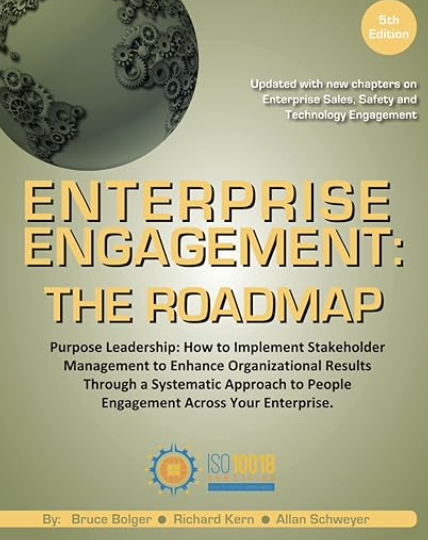
As with total quality management, stakeholder engagement generally does not require a significant investment because it employs the same recruitment, onboarding, learning and communications, rewards and recognition, job design, and other engagement platforms already in place. Ideally, after an initiation period, its principles get baked into the organization’s operating system. In fact, with proper measures in place, effectively designed engagement processes save money and enhance employee experiences, because they make it more meaningful for people to focus on those actions that help support the purpose, goals, objectives and values of the organization or of their team.
Even more appealing, the process can easily be tested with a team charged with accomplishing a specific goal.
Here is an overview of the framework to guide either the entire organization or a specific department. This same roadmap can apply to an organization seeking to reset its purpose, to a sales, customer service, administrative or other team seeking to achieve specific goals in an more enriching manner.
1. Establish the why. Determine the purpose, goals, objectives and values of the organization or of the team.
- For the organization these are the values that help establish priorities and standards of behavior. At Wegman’s, it’s helping people live healthier, better lives through exceptional food.
- For a team, these can be much more granular, such as achieving productivity, quality, retention, safety or referral goals for employees. For salespeople, that can mean finding new qualified prospects, closing sales, retaining customers, cross-selling; for channel partners, that can mean effective use of co-op funds, sales, or retention, etc.
If it’s a team-focused effort, what other stakeholders could affect the outcome? If it’s a sales campaign, are there internal production, logistics, or customer issues that could affect the ability to close sales or satisfy customers? If it’s a direct sales strategy, are there potential conflicts with third-party distribution partners?
3. Determine what success looks like in the form of clear metrics. Specify what the organization or team is trying to achieve in terms of purpose, goals, objectives, and values. What specific actions/behaviors are needed by who to achieve them and how can they be measured? Develop a set of no more than three to five metrics that include the result goals as well as the behaviors, actions needed to achieve them.
4. Identify the levers of engagement and tools for success. Look holistically at what people need to accomplish the goals or, in the case of customers and channels, whatever is in it for them to do business with it. In the case of employees, is it a sense of community and appreciation; training; communications; collaboration; mentoring or coaching; fun or rewards and recognition; voice and feedback? In the case of salespeople and channel partners, is it the ability to earn more money, be part of a community, establish meaningful relationships? Chances are, it’s a mix of everything. In which case, answer the question: how can current practices addressing these issues be leveraged and better aligned before seeking outside resources?
5. Understand the tools of engagement. One of the most common errors and sources of waste in stakeholder engagement is a failure to align all the tools and levers of engagement. Today’s engagement practitioner needs to understand the role and key elements of the following issues:
- Brand architecture
- Assessment and voice
- Culture and appreciation
- Communication (digital, face-to-face, 3-D, video, etc.)
- Learning and gamification
- Job design
- Collaboration and innovation
- Rewards and recognition
- Incentives
- Value-based diversity, equity, and inclusion
- Enterprise engagement technology
- Rewards—cash and merchandise, travel, gift cards, etc.
- Technology—how can enterprise or
- Measurement and analytics
- Continuous improvement
Whether it’s an organizational or team goal, a business operating or more granular system is needed to make sure the plan is implemented according to the purpose, goals, objectives, and values; regularly monitored and course--corrected as needed, and transparently evaluated for the purposes of continuous improvement. Business operating systems, easily powered by basic technologies, are simply a means of implementing and monitoring a strategy and tactics indicating roles and responsibilities, benchmarks, outcomes, and how to improve.
Were the desired results achieved? To what degree did the tracked actions or behaviors contribute? What outside factors could have affected results? What can be used for future planning purposes?
How will this information be used to develop the following year’s plan? How will that voice be incorporated in the organization’s overall as well as tactical plan.
EEA Resources
As an organization dedicated to stakeholder capitalism, the Golden Rule in business, the EEA gives away a lot of information, including this article, to help organizations of any size get started on a path to success through better stakeholder experiences without having to pay.
Here is an overview of all the ways we help.
Get Informed: Free Media and Information
- Benefit from free news, research, and trends on the implementation of stakeholder engagement practices covered in our weekly ESM media and regularly updated library and YouTube channel and RRN media, covering total rewards and regularly updated library. Click here for an ESM media kit. Click here for an RRN media kit.
- The Golden Rule Alliance outreach effort to education the business world and public on the meaning of stakeholder capitalism and its application to business and life.
- Enterpriseengagagement.org. 16 years of news, articles, research, and case studies on all aspects of engagement.
- Rewardsrecognitionnetwork.com. Over 20 years of news, information, research, case studies, and profiles in the world of total rewards.
- Learn how to design, implement, and measure the impact by signing up for the Stakeholder Engagement Academy for complete training, support services and community, offering six books and nine videos on all aspects of stakeholder management, implementation, metrics, reporting, and optional certification for program designers and sales professionals.
- Access a program analysis audit conducted by independent experts in engagement and compensation metrics to help determine impact and ROI of efforts—including a complimentary one-hour or less assessment meeting to determine the potential benefit.
- Enterprise Engagement for CEOs. The only how-to book specifically designed for CEOs, boards, and investors seeking a quick introduction the implementation of stakeholder engagement to harmonize the interests of all stakeholders toward a common purpose.
- Enterprise Engagement: The Roadmap. A detailed implementation textbook for management in sales, marketing, human resources, administration, or anyone who manages a team. It provides a detailed implementation roadmap as well as information on how to integrate all the tools of engagement to achieve your organization’s purpose, goals, and objectives.
- Free help desk on all aspects of stakeholder engagement implementation, program effectiveness measurement, and to find engagement solution providers.
- Assess the maturity and alignment of an organization’s stakeholder engagement practices. Fill out this free 10-minute confidential Stakeholder Management Assessment Calculator and access a low-cost version to conduct a thorough analysis of any size or type of organization to identify risks and opportunities.
- Measure the impact of purpose and people management with the EEA People Value Impact Calculator software to track the impact of people investments in human resources, marketing, distribution and supply chain management, communities, and more, available as an EEA member benefit.
- Promote meaningful charitable contributions with a free CharityChoice co-branded web site for your organization to support charitable giving by employees, customers and other stakeholders only to charities your organization chooses that help address the health, welfare, and safety of people.
- Take advantage of business development services in the marketing and human capital management using permission-based social, email, and video content marketing designed for solution providers seeking to help organizations enhance performance through people.
- Research on engagement impacts and ROI in your organization, including stakeholder alignment surveys, meta-analyses of other research, and white papers.
- Corporate Sustainability reporting advisory services for all types of organizations and solution providers seeking to benefit from a more sustainable path to value creation and to publish meaningful corporate sustainability reports.
Enterprise Engagement Alliance Services
 Celebrating our 15th year, the Enterprise Engagement Alliance helps organizations enhance performance through:
Celebrating our 15th year, the Enterprise Engagement Alliance helps organizations enhance performance through:1. Information and marketing opportunities on stakeholder management and total rewards:
- ESM Weekly on stakeholder management since 2009. Click here to subscribe; click here for media kit.
- RRN Weekly on total rewards since 1996. Click here to subscribe; click here for media kit.
- EEA YouTube channel on enterprise engagement, human capital, and total rewards since 2020
 Management Academy to enhance future equity value for your organization.
Management Academy to enhance future equity value for your organization.3. Books on implementation: Enterprise Engagement for CEOs and Enterprise Engagement: The Roadmap.
4. Advisory services and research: Strategic guidance, learning and certification on stakeholder management, measurement, metrics, and corporate sustainability reporting.
5. Permission-based targeted business development to identify and build relationships with the people most likely to buy.
Contact: Bruce Bolger at TheICEE.org; 914-591-7600, ext. 230.


